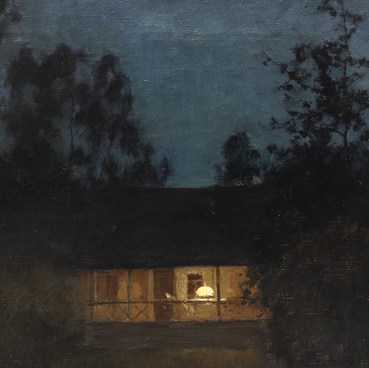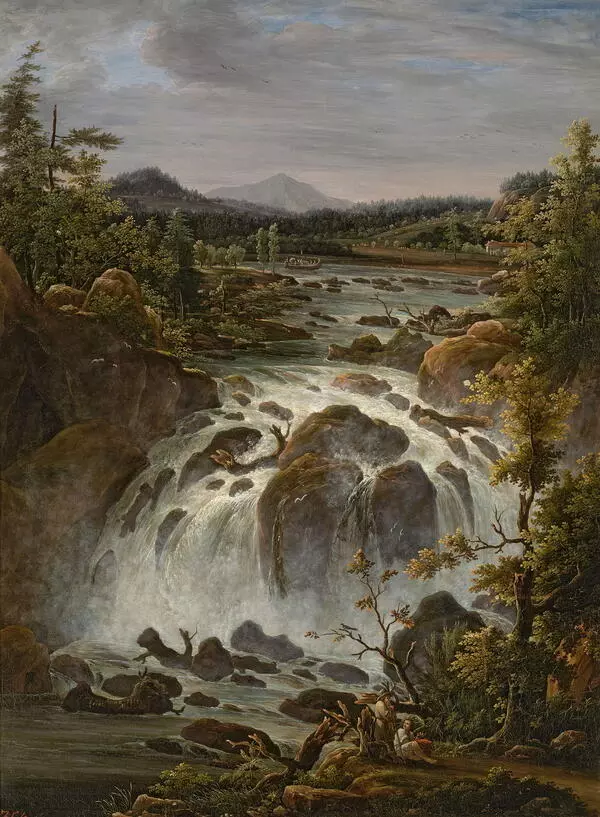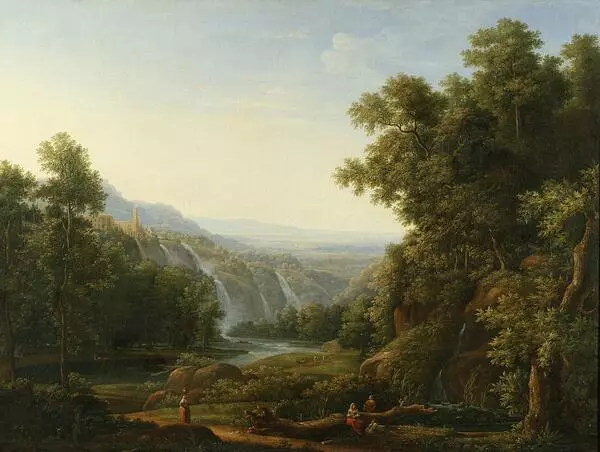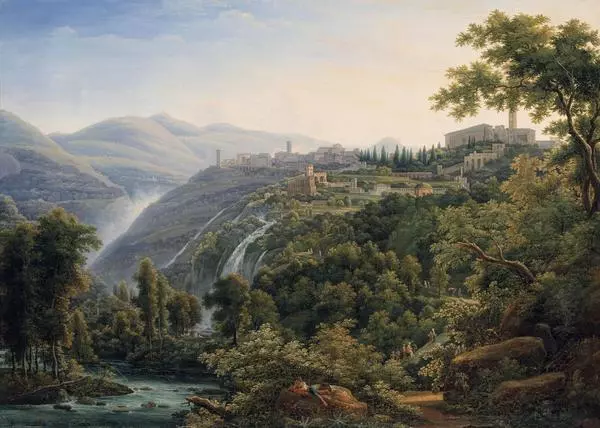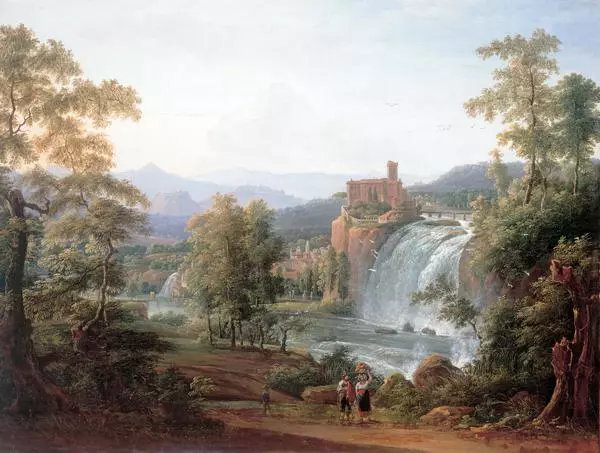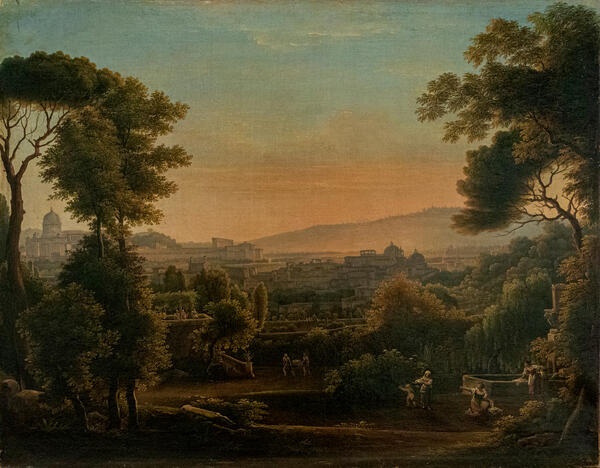Fyodor Matveyev painted this image in the 1810s. The picture depicts a waterfall among trees and a man in a small boat. He painted the landscape in accordance with the rules of classicism — the composition here is symmetrical and balanced and the picture, reflecting the ideal image of nature, has no superfluous details.
1 / 4
Landscape with a waterfall
Время создания
the 1810s
Размер
73,5x98 cm
Техника
Canvas, oil
Коллекция
8
Открыть в приложении#1
Fyodor Matveyev
Landscape with a waterfall
#2
#5
Already at the age of six, Fyodor Matveyev was sent to the School of Education under St. Petersburg Academy of Fine Arts. He entered the class of landscape painting at the age of 18. The ‘Vidopistsy’ of that time did not learn to paint from life, but copied European masters’ landscapes from the collection of the Academy and the Hermitage. Matveyev was very good at learning, graduating with the big gold medal. After completing the training at the Academy, the young artist went to Italy to improve his painting technique.
While in Rome, Fyodor Matveyev came to embrace classicism. According to the rules of this style, the painters should not reflect a specific area in their landscapes, but its sublime and idealised image. Frequently, people’s figures did not play a fundamental role; they were ‘placed’ in the picture to revive the overall view. Artists usually divided the composition into three planes: the foreground, the middle and the background. Additionally, masters of classicism often used the method of ‘wings’: they framed the general view in a natural frame, such as branches or rocks. In this painting, the trees on the sides serve as ‘wings’.
While in Rome, Fyodor Matveyev came to embrace classicism. According to the rules of this style, the painters should not reflect a specific area in their landscapes, but its sublime and idealised image. Frequently, people’s figures did not play a fundamental role; they were ‘placed’ in the picture to revive the overall view. Artists usually divided the composition into three planes: the foreground, the middle and the background. Additionally, masters of classicism often used the method of ‘wings’: they framed the general view in a natural frame, such as branches or rocks. In this painting, the trees on the sides serve as ‘wings’.
#7
Waterfalls became one of the master’s favorite motifs. After the Emperor Alexander I granted Matveyev perpetual maintenance, the artist sent him six paintings with waterfalls and lakes as a gift. His contemporaries believed that the artist was especially good at depicting water. Until his old age, Matveyev went to draw waterfalls from life in the vicinity of the township of Tivoli.
Though the artist followed the strict rules, his landscapes, however, did not look dry or sketchy. Though the artist followed the strict rules, his landscapes, however, did not look dry or sketchy.
#6
Collector Pavel Svinyin said about him:
“Matveyev has been in Rome for more than 30 years and he is revered, in this Kingdom of Artists, as one of the best landscape painters. His works are distinguished by a bluish tone, which, instead of spreading coldness, envelopes the objects — especially the distant ones — with some pleasant veil”.
#8
The Yaroslavl Museum of Fine Arts
читать дальшескрыть
00:00
00:00
1x
Landscape with a waterfall
Время создания
the 1810s
Размер
73,5x98 cm
Техника
Canvas, oil
Коллекция
8
Открыть в приложении
Поделиться





